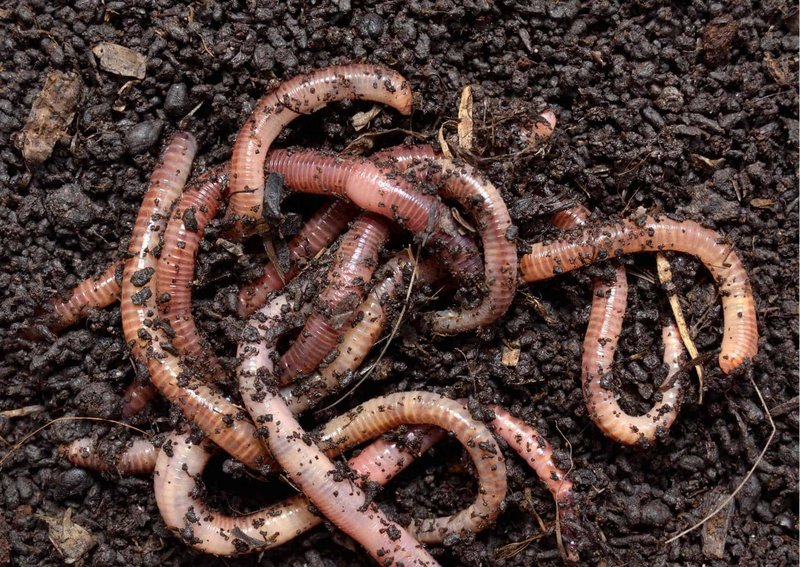
Imagine you’re planning a picnic. If the weather is sunny and warm, you grab your blanket and snacks, excited to relax outside. But if it’s freezing or pouring rain, you probably stay indoors, right? Earthworms face a similar dilemma. They’re sensitive to changes in temperature, which can dictate their activities and movements underground. So, what does this mean for their day-to-day survival and the health of the soil they help maintain? Let’s unravel this together.
Understanding Earthworm Habitats
Earthworms thrive in moist soils, which are generally found in gardens, forests, and agricultural areas. They dig tunnels that aerate the soil and improve its structure, which benefits plant life. These creatures are usually found at depths of about 12 inches in the soil, where temperatures remain relatively stable.
But how do different temperatures affect these environments? When the ground gets too hot or too cold, it can change the moisture levels in the soil. If it’s too dry, earthworms might burrow deeper to escape the heat and find cooler, wetter environments. If it’s too cold, they may become sluggish and burrow down further to avoid freezing. Their behavior is all about survival, just like us seeking shelter on a chilly day.
Temperature and Activity Levels
Temperature significantly impacts how active earthworms are. They’re most active when temperatures are around 60°F to 70°F (15°C to 21°C). At these temperatures, you’ll find them wriggling about, doing their vital work of aerating the soil and breaking down organic matter.
On the other hand, as the temperatures drop below 50°F (10°C), their activity slows. You might notice fewer earthworms surfacing after a rainstorm, which is often when they’re most visible. In colder conditions, they can even enter a state of dormancy or become less active. This doesn’t mean they’re gone; they’re just hibernating, waiting for warmer days to return.
In contrast, high temperatures above 85°F (29°C) can also be harmful. At this point, earthworms can become stressed. They might move deeper into the soil again to escape the heat. If they can’t find a cooler spot or enough moisture, they risk dying, which means fewer earthworms to support your garden or local ecosystem.
Feeding Habits and Temperature Changes
Let’s talk about what earthworms eat. They mainly munch on organic matter like fallen leaves, decomposing plants, and other natural materials in the soil. But guess what? Their feeding habits are also influenced by temperature!
When the weather is warm and cozy, earthworms are more likely to feed actively. They break down organic matter more efficiently, helping to enrich the soil. It’s like having a hearty meal when the sun shines—everything feels more vibrant and alive!
But when it starts getting cold, their interest in food dwindles. They slow down their eating, which can lead to less nutrient recycling in the soil. This can affect plant growth over time. It’s a cycle: healthy earthworm populations lead to rich soil, which supports healthy plants, and so on.
Behavioral Adaptations to Temperature
Earthworms have some clever tricks for coping with temperature changes. One of the most interesting adaptations is their ability to sense moisture and temperature. If they feel the soil getting too hot or dry, they instinctively burrow deeper into the earth.
This adaptation is crucial for their survival. The deeper layers of soil tend to be cooler and retain more moisture. By moving down, earthworms can escape the harsh surface conditions and stay hydrated. Think of it as finding refuge in the shade during a heatwave!
Moreover, when temperatures fluctuate with the changing seasons, earthworms might migrate to areas where conditions are more favorable. If one area becomes too dry or hot, they can travel to a cooler, shadier spot that better meets their needs. This behavior helps maintain stable populations across various habitats.
Impact of Climate Change on Earthworm Behavior
As we face *global climate change*, temperature extremes become increasingly common. Earthworms are particularly vulnerable to these shifts. Rising temperatures might lead to warmer winters and hotter summers, putting stress on their populations.
With more extreme weather, earthworms may find it harder to adapt. Hotter summers can dry out the soil faster, while warmer winters might cause earlier activity, making it harder for them to manage energy reserves. Consequently, there could be fewer earthworms to enrich our soils, which can ultimately affect plant growth and the overall health of our ecosystems.
This cycle of climate impacts raises important questions. Will future generations enjoy flourishing gardens and farm environments thanks to healthy earthworm populations? Or will changing temperatures disrupt these vital roles? It’s a challenge we need to keep in mind as we work towards a sustainable future.
Final Thoughts on Earthworm Behavior and Temperature
Understanding how temperature affects earthworm behavior highlights the delicate balance within our ecosystems. These unassuming creatures play a crucial role in maintaining soil health and productivity. By adapting to their environment, they help promote plant growth and nutrient cycling, key parts of a thriving ecosystem.
Improving our awareness of their needs, especially in the face of changing weather patterns, can help us support their populations. It’s as simple as providing rich, moist soil in our gardens or protecting their habitats from extreme conditions.
Next time you see an earthworm, remember: they’re more than just squiggly little guys; they’re essential to the health of our planet. So, let’s celebrate their role and strive to create environments where they can thrive!

